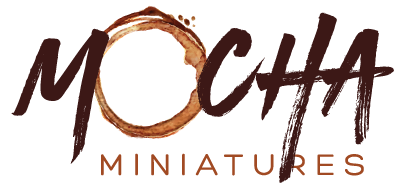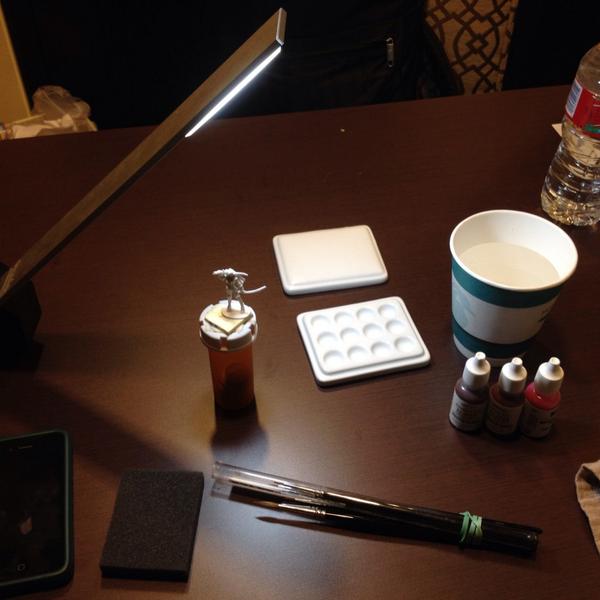Traveling: it's exciting, empowering, and exhausting all at the same time. When I travel, I routinely work extra-long days and I have a hard time sleeping without my cleansing "down time" which involves painting or some form of visual creativity and/or geekery. While painting on-the-go presents several challenges (especially if you're super-attached to your workspace), I find that proper planning can help balance the inconsistencies. I used to provide myself with excuses for why I couldn't paint while traveling:
Excuse #1: The hotel desk is too high/too low.
- Use the buffet of pillows provided at hotels to boost your height/back if the chair is too low and isn't adjustable. If the desk is too low, use a foam square (that comes in many miniature packages), another pillow, or towel for your arm rest. Just be sure to take breaks if you find you're hunching over too much.
Excuse #2: I can't bring my favorite tools.
- You need less than you think! Armed with my beloved wireless lamp, a small bag of paints, my favorite brushes, and a ceramic travel palette I purchased on Etsy, I can paint anywhere. The only difficulty is transporting everything safely-- take the time to carefully pack & you won't be disappointed with cracked paint palettes or chipped minis.
Excuse #3: I don't have the time.
- Find a polite escape. While traveling, I have the opportunity to socialize with co-workers when they want to go out in the evenings. Just like family, I generally enjoy being around them. However, I can only take constant socializing in appropriate doses until my mood starts to rapidly decline. I need "down time" where I can recharge in order to be effective the next day. It's nothing personal, it's just me-- and there's nothing worse than a sleep-deprived me without my black coffee. Trust me.
Even if I'm only able to fit 30 minutes of painting time in every day, at least I'm setting the groundwork for my on-the-road-routine. During my most recent trip, I still sat down to paint at midnight after a 12+ hour workday. I painted for 45 minutes and made some great progress! Despite an early morning the next day, I had my best night's rest of the entire trip. Here was my setup:
It's not easy. I won't lie. But good habits are often hard to build. I'm personally inspired by someone I saw at a convention, Lyn Stahl, an accomplished miniature painter and owner of Metalhead Minis, transporting her miniatures in a Table War case. She walked by during my one-on-one session with a guest sculptor/painter & I had to ask about her travel case. Inside the glass-front case were her display miniatures held tightly in place by magnets. Like many professional painters, Lyn works from hotels as she travels to and from conventions and paints wherever the opportunity presents itself:
As always, preparation is key and safely transporting miniatures is a must! If I paint consistently while traveling, I'd also like to purchase one of those transport cases in the near future. In the meantime, I'm determined to develop good habits, learn from the successes of painters like Lyn, and find the best ways to stay painting while traveling!












